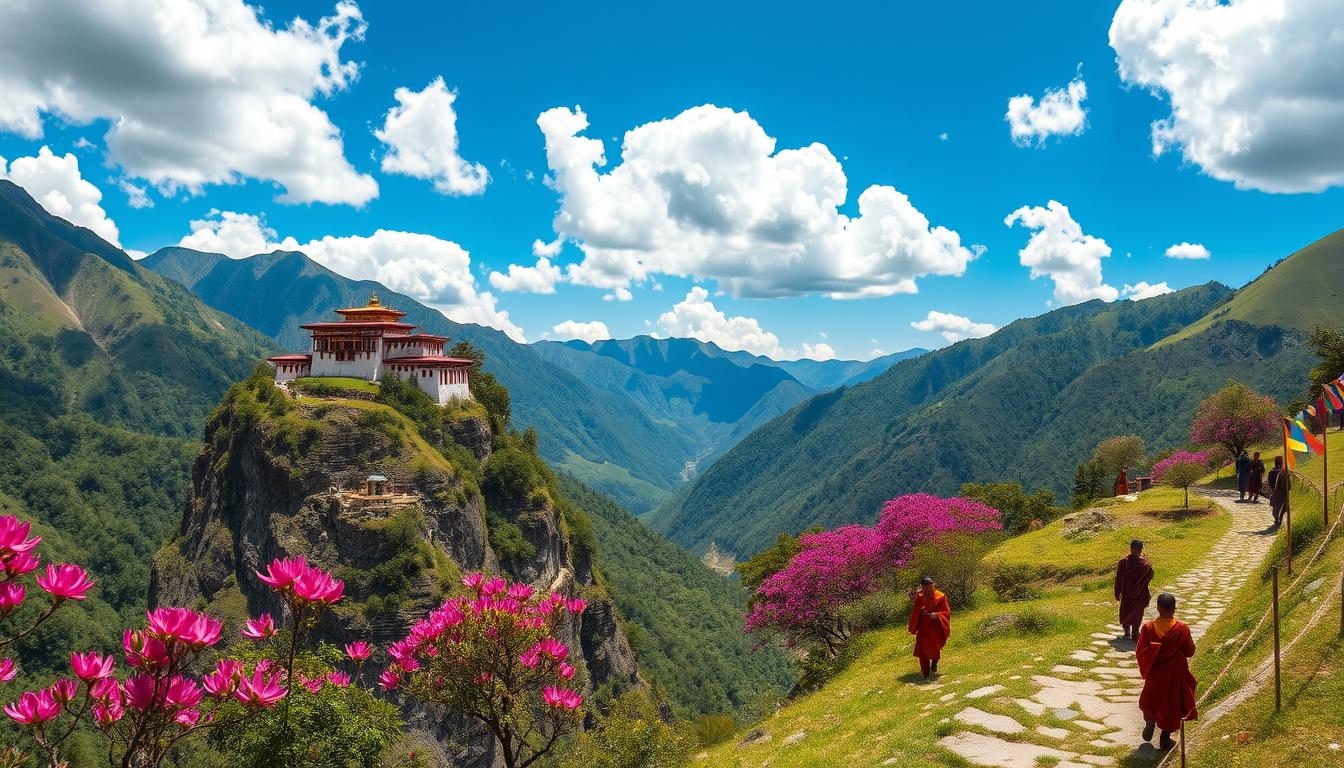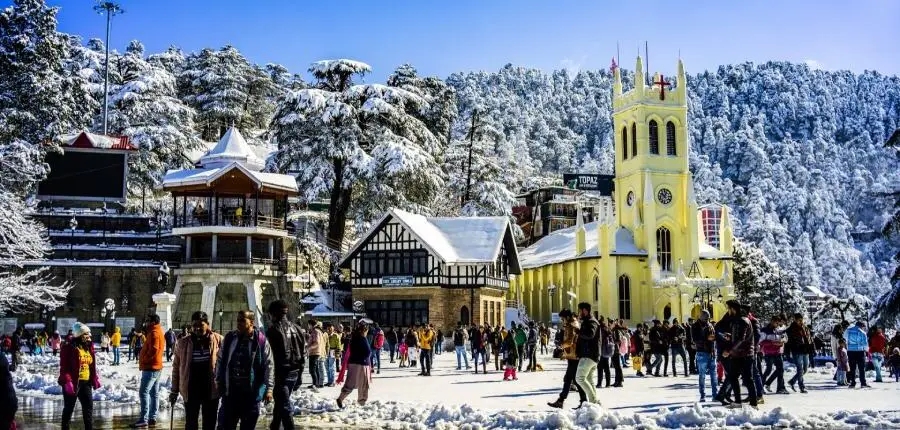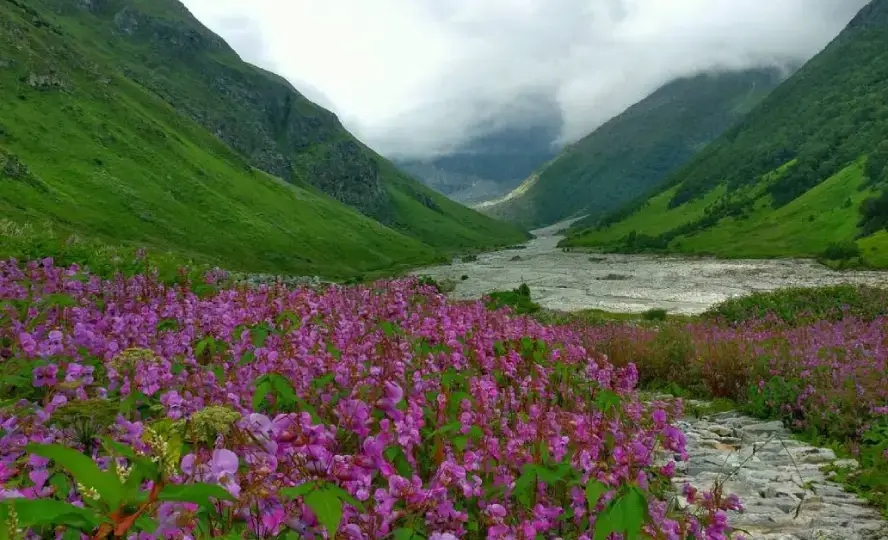Bhutan is known for its stunning landscapes, rich culture, and deep-rooted spirituality, offers numerous attractions for travelers. As one of the least touristy countries in the world, Bhutan has managed to preserve its rich traditions, stunning natural environment, and distinct national identity. Here are some of the best places to visit in Bhutan:
1.Paro Valley
Paro Valley is one of Bhutan’s most scenic and historically significant regions, renowned for its stunning landscapes, ancient temples, and vibrant culture. Located in western Bhutan, Paro is home to the country's only international airport, making it a primary entry point for most visitors. Paro Taktsang (Tiger’s Nest Monastery) is one of Bhutan’s most iconic landmarks which clings to the edge of a cliff, offering breathtaking views and a must visit for tourists. The monastery is associated with Guru Rinpoche (Padmasambhava), who is said to have flown to the site on the back of a tigress, hence the name "Tiger's Nest."Tourists can also visit Rinpung Dzong which is a traditional Buddhist fortress that showcases Bhutanese architecture. Kyichu Lhakhang is one of the oldest temples in Bhutan, believed to have been built in the 7th century by Tibetan Emperor Songtsen Gampo. The temple’s peaceful atmosphere and sacred relics make it a revered site for pilgrims. Beyond the famous Tiger’s Nest trek, there are numerous trails through pine forests, offering scenic views of the valley and the surrounding mountains and is ideal for hiking. The valley is rich in natural beauty, with its terraced fields, serene rivers, and towering mountains. The combination of cultural heritage and stunning landscapes makes Paro Valley a must-visit destination in Bhutan.
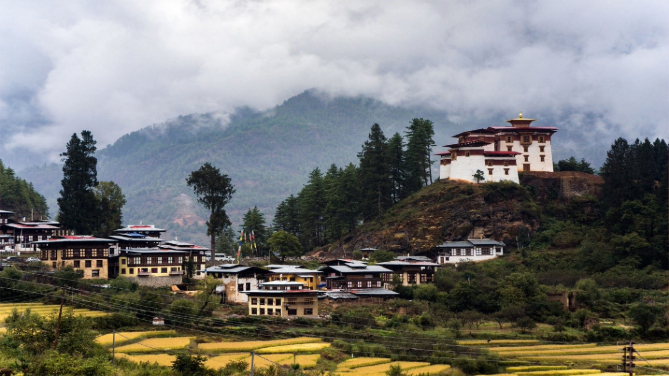
2.Thimphu
Thimphu, the capital of Bhutan, is a unique blend of tradition and modernity, offering a rich cultural experience amidst the stunning backdrop of the Himalayas. It's the political, economic, and cultural heart of Bhutan, and while modern elements like cafes and shops are present, Thimphu retains a deep connection to its traditions. One of the key attractions of Thimphu is Buddha Dordenma Statue, One of the largest Buddha statues in the world, standing 169 feet tall, located on a hill overlooking the Thimphu Valley. The statue houses over 100,000 smaller Buddha statues and was built to fulfill a prophecy for peace and happiness in the world. Tashichho Dzong fortress which serves as the seat of Bhutan’s government showcases traditional Bhutanese architecture with intricate woodwork and grand courtyards. The dzong hosts important religious events, including the annual Thimphu Tshechu festival. Tourists can also visit National Memorial Chorten which is a white stupa built in 1974 in memory of Bhutan’s third king, Jigme Dorji Wangchuck and serves as a symbol of peace and spirituality. Other important places to explore in Thimphu are Folk Heritage Museum, Changangkha Lhakhang temple and Simtokha Dzong. There are several trails in and around Thimphu, such as the Wangditse Nature Trail, offering serene walks through forests and hills, with scenic views of the city and its surroundings.
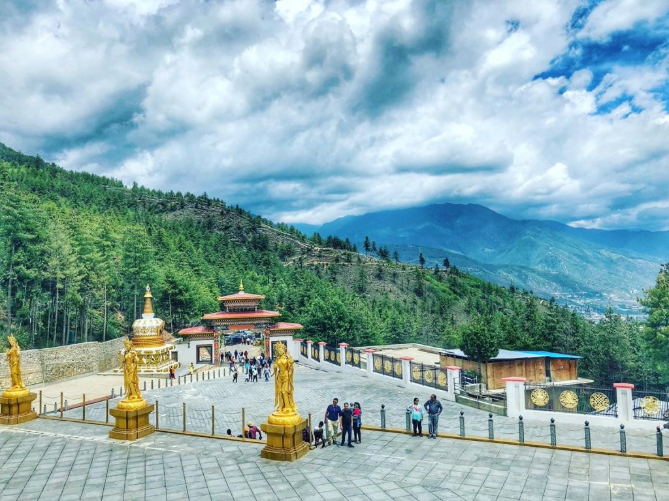
3.Punakha
Punakha is a picturesque town in Bhutan, known for its historical significance and stunning natural beauty. It was once the capital of Bhutan until 1955, and today it remains the winter residence of the Bhutanese monastic body. Located at the confluence of the Pho Chhu and Mo Chhu rivers, Punakha is surrounded by fertile valleys and terraced rice fields. One of Bhutan’s most majestic fortresses, the Punakha Dzong is renowned for its intricate architecture and significant role in Bhutanese history. It serves as the administrative and religious center of the region. Punakha is home to one of the longest suspension bridges in Bhutan, offering breathtaking views of the river and surrounding landscapes. Tourists can visit Chimi Lhakhang temple which is known as the "Temple of Fertility," and is dedicated to the Divine Madman, Drukpa Kunley, a revered figure in Bhutanese culture. Punakha’s mild climate, beautiful landscapes, and cultural heritage make it a must-visit destination in Bhutan, especially for those interested in history, nature, and spirituality.
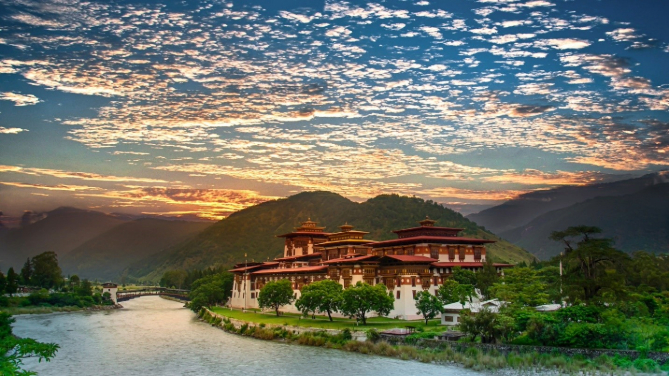
4. Haa Valley
Haa Valley is a serene and secluded valley in western Bhutan, known for its pristine beauty and rich cultural heritage. It is one of the most isolated and least visited areas in Bhutan, which adds to its charm for travelers seeking tranquility and untouched nature. The valley lies close to the Bhutan-Tibet border and is surrounded by the picturesque Haa River and rolling hills. The valley is renowned for its stunning landscapes, with lush green forests, alpine meadows, and traditional Bhutanese farms. The scenery is perfect for nature lovers and those seeking peace away from the more touristic parts of Bhutan. Lhakhang Karpo and Lhakhang Nagpo are the two ancient temples, known as the White and Black Temples, are sacred sites in the valley. They are believed to have been built in the 7th century by the Tibetan King Songtsen Gampo, adding significant historical and religious value to the region. The highest motorable pass in Bhutan, Chele La connects Haa Valley to Paro. The pass offers breathtaking panoramic views of the surrounding Himalayan peaks, including Mount Jomolhari, one of the highest mountains in Bhutan. Haa Valley offers various trekking routes that allow travelers to explore its pristine nature and ancient trails. One of the most popular hikes is to Juneydrag, a sacred site nestled high in the mountains. Haa Valley is perfect for those who wish to experience Bhutan's natural beauty in a less commercialized setting, with opportunities for cultural immersion and adventure in one of the country's most peaceful regions.
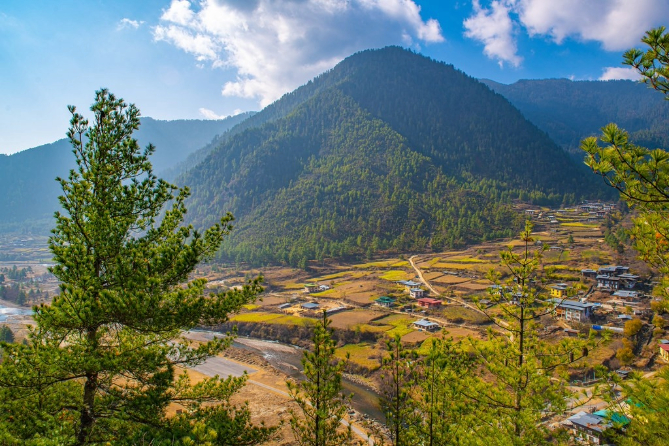
5.Bumthang Valley
Bumthang Valley is one of the most culturally and historically significant regions in Bhutan. Often referred to as the spiritual heartland of the country, it is home to some of Bhutan's oldest and most revered temples and monasteries. The valley is situated in the central part of Bhutan and is made up of four smaller valleys: Chokhor, Tang, Ura, and Chhume, each offering unique landscapes and rich heritage. Bumthang is home to numerous important temples and monasteries, including Jambay Lhakhang, Kurje Lhakhang, and Tamshing Lhakhang (founded by the famous treasure discoverer Pema Lingpa). Bumthang's landscapes are characterized by rolling hills, wide valleys, and verdant fields. It is one of the most picturesque parts of Bhutan, with a peaceful and rural charm that contrasts with the more rugged Himalayan terrain in other regions. The valley is surrounded by apple orchards, barley fields, and pine forests, providing a tranquil setting for travelers. The area is great for trekking and hiking, offering various trails that allow visitors to explore the valley’s natural beauty and visit some of its remote monasteries.The Bumthang Owl Trek and Ngang Lhakhang Trek are popular routes for those looking to immerse themselves in both the cultural and natural splendor of the region.Bumthang Valley is a serene, spiritually rich destination that offers visitors a glimpse into Bhutan's deep cultural roots and unspoiled natural beauty. It is ideal for those who are interested in Bhutanese history, religion, and outdoor activities in a peaceful setting.
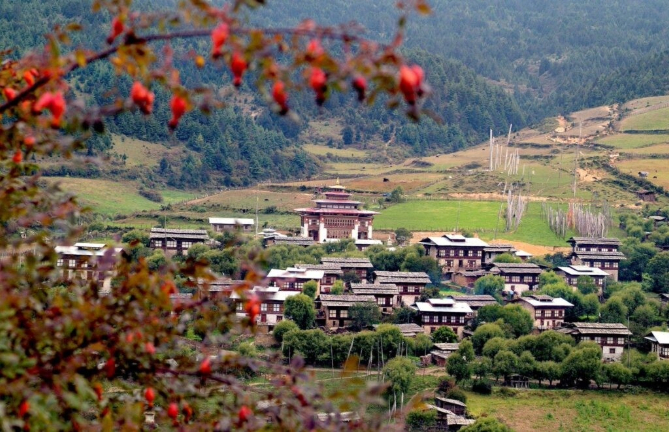
These destinations encapsulate the essence of Bhutan, from its deeply spiritual monasteries to its pristine natural beauty.


